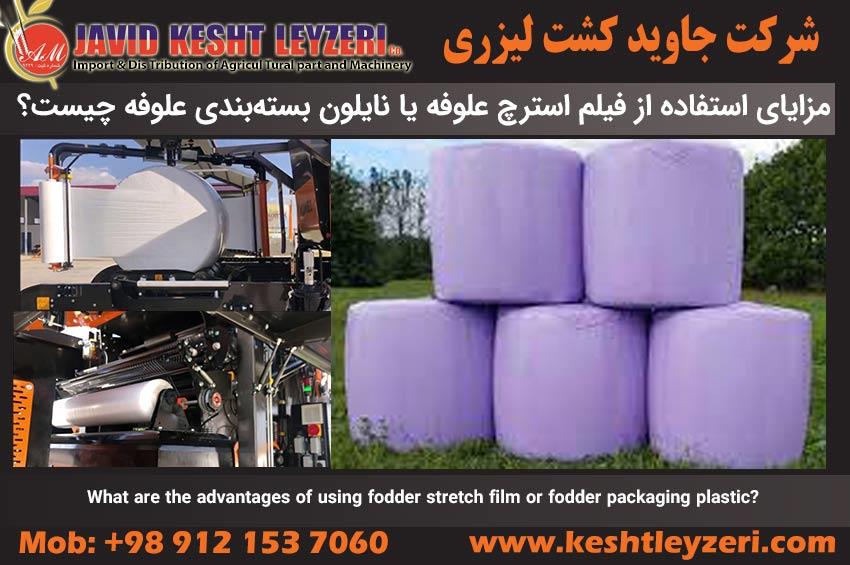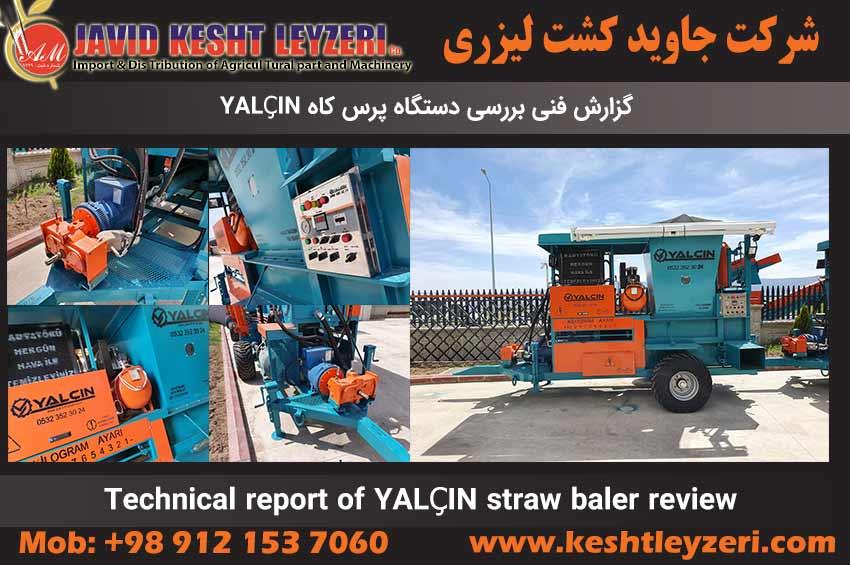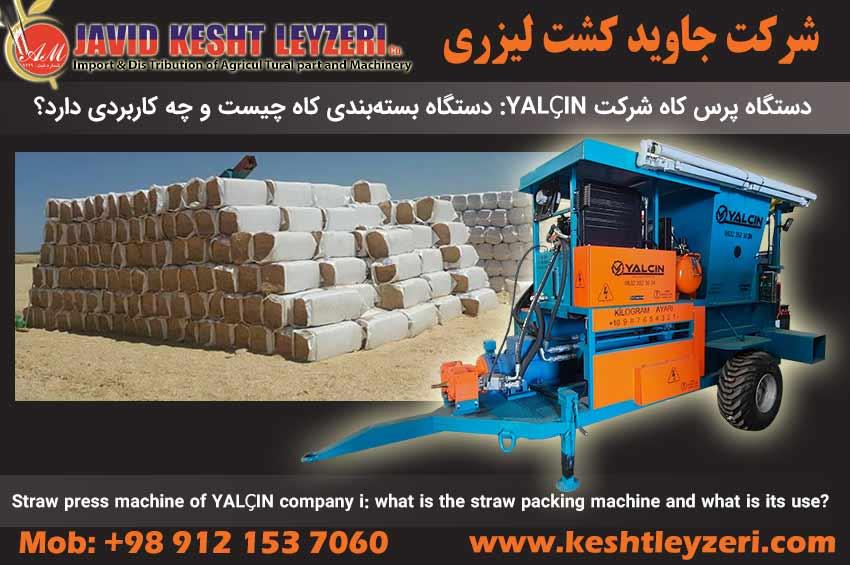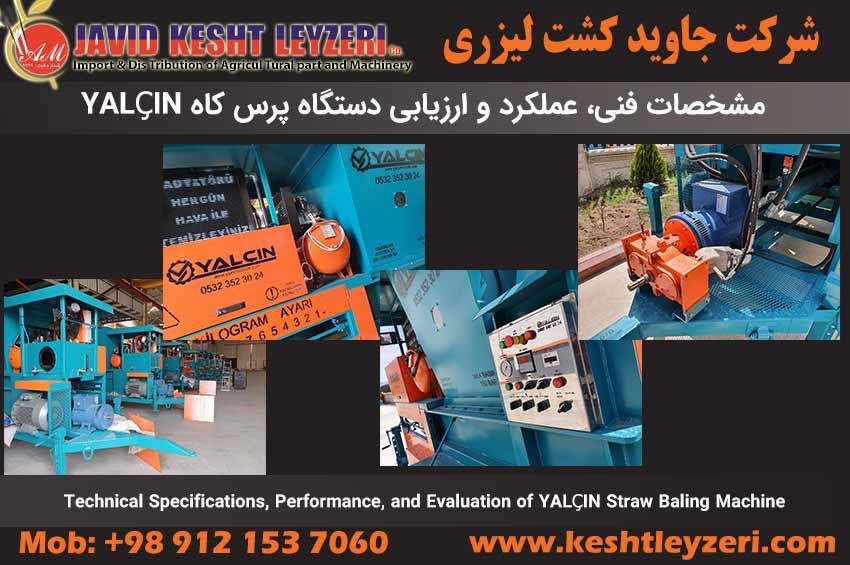
What are the advantages of using fodder stretch film or fodder packaging plastic?
javid keshtleyzeri Co.ltd
Fodder packaging is done in two ways. The first method is to use the old method, in which fodder is stored in old bunker silos and then transported to the destination, which is generally livestock farming. This method is less used because it is difficult and laborious to do and can cause many losses to both the buyer and the seller.
The second method of using stretch film is fodder. Nylon packing or stretch silage is used as one of the best methods of forage packing. The structure of this type of plastic is such that fodder is easily poured into it and tightly packed and transported to the destination. The use of stretch fodder has become common in recent years and is an easy and effective way to maintain the health of edible products.
Advantages of using fodder stretch film
Fodder is the most important and main food for livestock. This fodder consists of farm residues such as barley stalks, wheat, rice, corn leaves and stalks, beet pulp, cotton flour, etc. To prepare animal feed and feed, the fodder collected from the surface of agricultural fields must be packed or silaged in nylon fodder using special machines and agricultural devices. Forage silage by nylon forage has many advantages. These advantages include creating useful conditions for the fermentation process in fodder and significantly increasing the nutritional value of fodder, evacuating the air inside fodder and increasing its storage period for two years, the possibility of using fodder for the coming years, maintaining the freshness of fodder inside plastic. The advantages of fodder packaging are the insensitivity of nylon silage to different weather conditions, easy moving of packaged fodder, reducing the cost of storing animal feed and eliminating the costs of building moat silos for fodder storage.
The use of fodder stretch packaging is one of the new and relatively new methods for packaging agricultural products, which is widely used and produced due to its many advantages. In this section, we are going to discuss the advantages of using this method and explain each of these advantages.
1- Maintaining the health of products: One of the important points in silage packaging is that by using it, fodder and other agricultural products are protected against environmental factors and the possibility of their deterioration and corruption is reduced.
2- Production in different dimensions: One of the other features of stretch fodder packaging is that this nylon can be produced and used in different sizes and dimensions. This feature allows manufacturers to offer their products in different dimensions according to the needs of customers.
3- The possibility of production in different colors: one of the other features of stretch sillage film is that it can be produced in different colors. This allows consumers to put their products in different color packages according to their type and easily carry out the packing and shipping process.
What are the uses of stretch fodder film?
Fodder stretch or fodder packaging nylon is used in the packaging of agricultural products. The use of stretch fodder in silage is the main purpose of maintaining and providing food for livestock farms in the cold seasons of winter and autumn. All agricultural products can be ensiled, but the most popular forages ensiled using plastic film are: corn, forage, alfalfa, sugar cane, barley and wheat. Corn Due to its high energy and digestibility, corn silage is used in many dairy farms and cattle farms. Alfalfa silage retains more nutrients than other forages. Barley as a green fodder produces more per hectare and is the best, cheapest and easiest product to provide feed for livestock and poultry. Ensiling wheat in order to feed dairy cows has also become common.
The most popular fodder ensiled using plastic film are:
Corn: Corn is used as one of the most important fodder in the livestock industry. Due to its high energy and proper digestibility, this fodder is very suitable for meeting the nutritional needs of livestock. Corn silage, which is made from dried and compressed corn, is used as a stable and portable feed source for livestock, and corn silage is a convenient way to store and use this forage.
Fodder: Grass silage is one of the most diverse production products and is usually cultivated and produced in large fields with suitable conditions.
Alfalfa: Alfalfa has a good taste and a very high protein level and can withstand harsh winters and dry summers well. Alfalfa silage retains more nutrients than other forages. Alfalfa can be cultivated in soils with good drainage, fertility and high Ph level.
Sugarcane: Sugarcane silage is a by-product of sugarcane that remains in the field after harvesting. Sugarcane production companies can send its leaves and waste as silage to livestock farms.
Barley: Barley produces more green forage per acre than other crops, especially when fertilized with nitrogen. Barley silage is actually the best, cheapest and easiest product to provide feed for livestock and poultry. Even in drought conditions can be provided for their growth.
Wheat: Ensiling wheat to feed dairy cows has recently become popular. Common wheat is a fall crop and has many nutrients.






